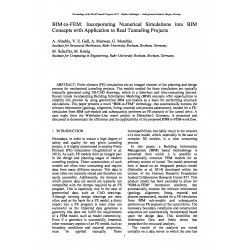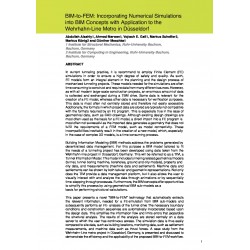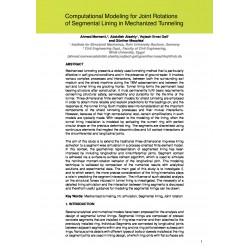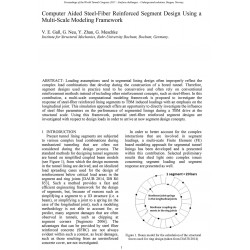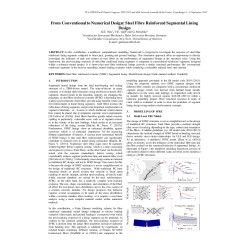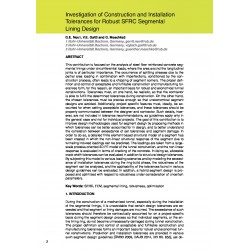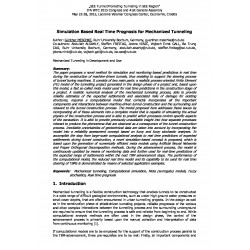No document
Search & filter
Search for a publication
Search & filter
List of products by author: V. E. Gall
-
BIM-to-FEM: Incorporating Numerical Simulations into BIM Concepts with Application to Real Tunneling Projects
Abstract: Finite element (FE) simulations are an integral element of the planning and design process for mechanized tunneling projects. The models needed for these simulations are typically manually generated using 2D-CAD drawings, which is a laborious and time-consuming process. Recent trends incorporating Building Information Modeling (BIM) concepts offer opportunities to simplify this process by using...
0,00 € -
BIM-to-FEM: Incorporating Numerical Simulations into BIM Concepts with Application to the Wehrhahn-Line Metro in...
Abstract: In current tunneling practice, it is recommend to employ Finite Element (FE) simulations in order to ensure a high degree of safety and quality. As such, FE models form an integral element in the planning and the design process of mechanized tunneling projects. These models needed for the simulations are oftentime consuming to construct and require data from many different sources. However,as...
0,00 € -
Computational Modeling for Joint Rotations of Segmental Lining in Mechanized Tunneling
Abstract: Mechanized tunneling presents a widely used tunneling method that is particularly effective in soft ground conditions and in the presence of ground water. It involves various complex processes and interactions, between both the surrounding soil medium and the shield machine during the TBM advancement and between the soil and tunnel lining via grouting mortar. Tunnel lining forms the permanent...
0,00 € -
Computer Aided Steel-Fiber Reinforced Segment Design Using a Multi-Scale Modeling Framework
Abstract: Loading assumptions used in segmental lining design often improperly reflect the complex load combinations that develop during the construction of a bored tunnel. Therefore, segment designs used in practice tend to be conservative and often rely on conventional reinforcement methods instead of including other reinforcement concepts, such as steel-fibers. In this contribution, a multi-scale...
0,00 € -
From Conventional to Numerical Design Steel Fibre Reinforced Segmental Lining
Abstract: In this contribution, a multilevel computational modelling framework is proposed to investigate the response of steel fiber reinforced lining segments subjected to thrust jack, grouting and ground loadings. This simulation approach offers an opportunity to directly investigate the influence of type and content of steel fibers on the performance of segmented linings at the structural scale....
0,00 € -
Investigation of Construction and Installation Tolerances for Robust SFRC Segmental Lining Design
Abstract: This contribution is focused on the analysis of steel fiber reinforced concrete segmental linings under circumferential loads, where the area around the longitudinal joints is of particular importance. The occurrence of splitting stresses due to the partial area loading in combination with imperfections, conditioned by the construction process, often leads to a chipping of segment corners. The...
0,00 € -
Simulation Based Real Time Prognosis for Mechanized Tunneling
Abstract: The paper proposes a novel method for simulation and monitoring-based predictions in real time during the construction of machine-driven tunnels, thus enabling to support the steering process of tunnel boring machines. It consists of two main parts: a realistic process-oriented Finite Element (FE) model of the tunnelling project generated in the design phase of a project and, based upon this...
0,00 €

